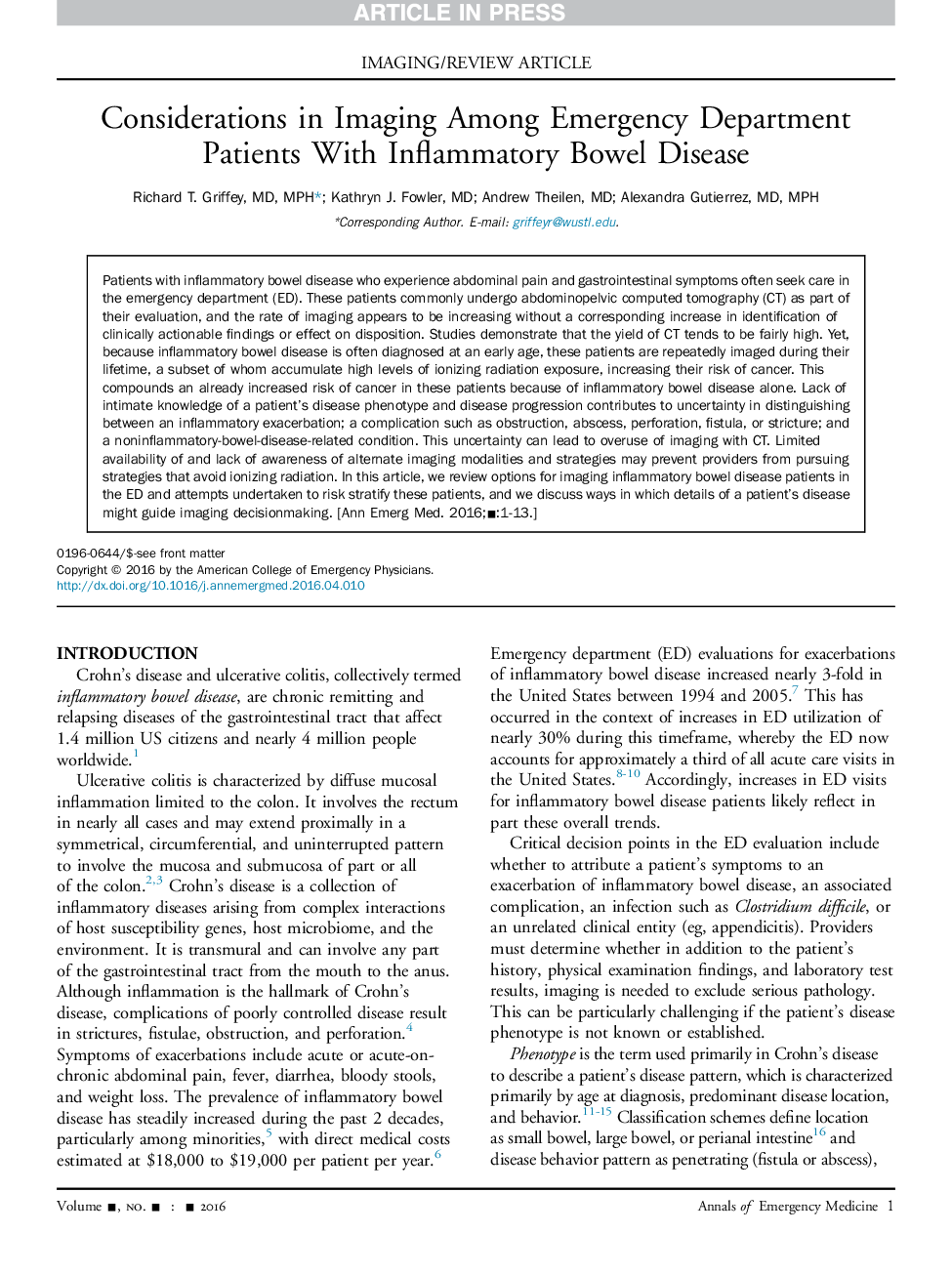| Article ID | Journal | Published Year | Pages | File Type |
|---|---|---|---|---|
| 5651626 | Annals of Emergency Medicine | 2017 | 13 Pages |
Abstract
Patients with inflammatory bowel disease who experience abdominal pain and gastrointestinal symptoms often seek care in the emergency department (ED). These patients commonly undergo abdominopelvic computed tomography (CT) as part of their evaluation, and the rate of imaging appears to be increasing without a corresponding increase in identification of clinically actionable findings or effect on disposition. Studies demonstrate that the yield of CT tends to be fairly high. Yet, because inflammatory bowel disease is often diagnosed at an early age, these patients are repeatedly imaged during their lifetime, a subset of whom accumulate high levels of ionizing radiation exposure, increasing their risk of cancer. This compounds an already increased risk of cancer in these patients because of inflammatory bowel disease alone. Lack of intimate knowledge of a patient's disease phenotype and disease progression contributes to uncertainty in distinguishing between an inflammatory exacerbation; a complication such as obstruction, abscess, perforation, fistula, or stricture; and a noninflammatory-bowel-disease-related condition. This uncertainty can lead to overuse of imaging with CT. Limited availability of and lack of awareness of alternate imaging modalities and strategies may prevent providers from pursuing strategies that avoid ionizing radiation. In this article, we review options for imaging inflammatory bowel disease patients in the ED and attempts undertaken to risk stratify these patients, and we discuss ways in which details of a patient's disease might guide imaging decisionmaking.
Related Topics
Health Sciences
Medicine and Dentistry
Emergency Medicine
Authors
Richard T. MD, MPH, Kathryn J. MD, Andrew MD, Alexandra MD, MPH,
